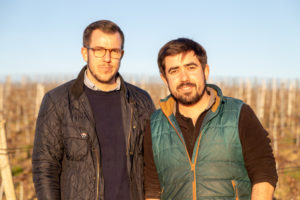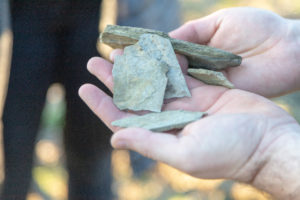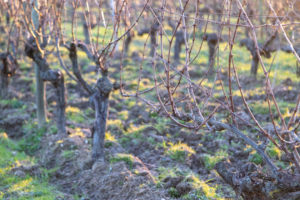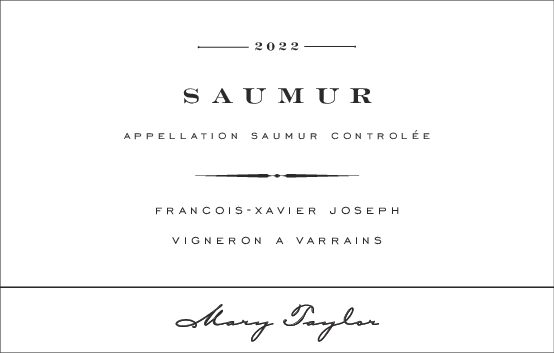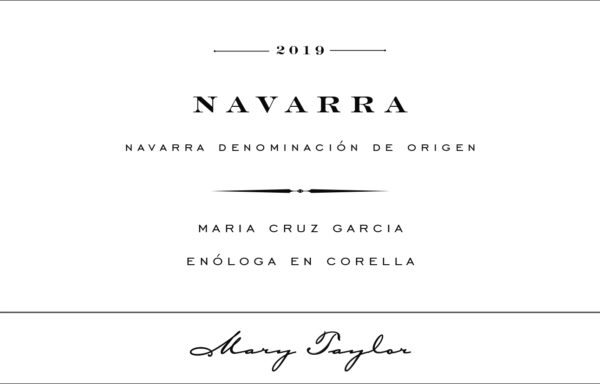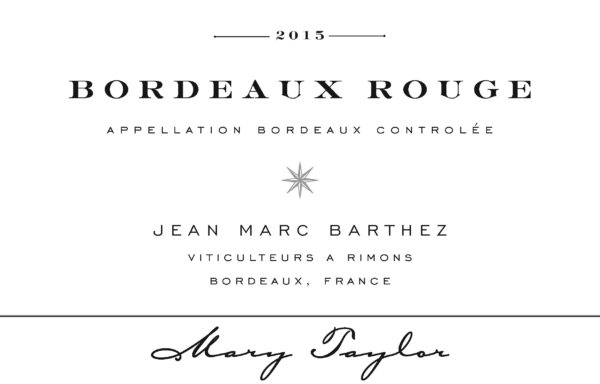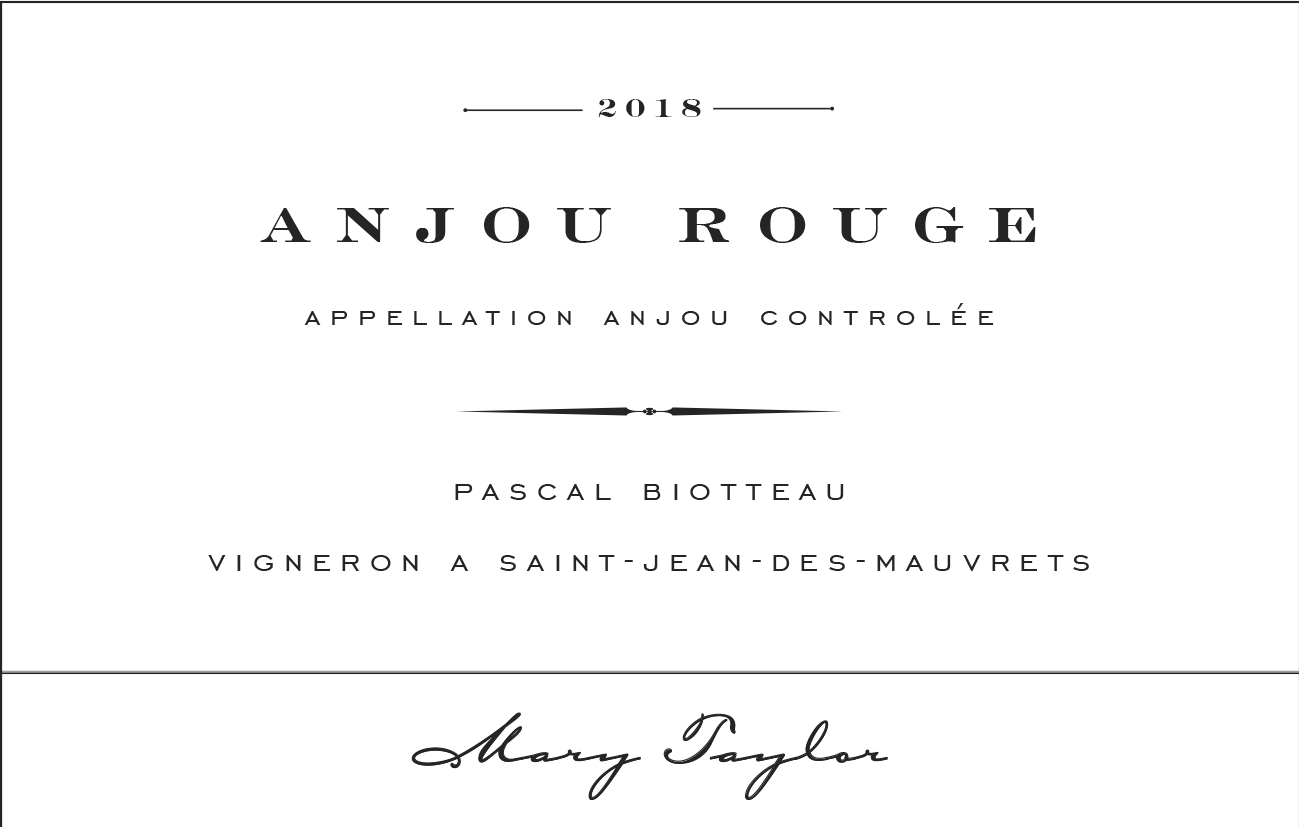
This extremely conscientious farm in the Coteaux de L’Aubance within the Anjou-Villages is run by a winemaking family, known by Biotteau. This is the fourth generation of Biotteau to make wine here. Today the family is hypersensitive to respecting the land and the winery is HVE level 3 certified.
Wine Description
90 Points – Best Buy – Wine Enthusiast – 2022
“The wine opens with black cherry, a sublayer of blueberry and then jumps to pomegranate and raspberry in your glass. Black tea chimes in on the midpalate briefly before resting in a pile of limestone and pencil shavings soaked in delicious black fruit. Give this wine 30 minutes to open in your glass before drinking to get the best of it. Drink now–2026.”
In Vinepair: Cabernets Best Bang for Your Buck: “Mary Taylor’s Anjou Rouge, a blend of Cabernet Franc and Cabernet Sauvignon from Anjou, comes to mind when I think about Cabernet Sauvignon. The thing I love about wines under the Mary Taylor label, besides their focus on biodiversity, organic farming practices, and minimal-intervention winemaking, is that their wines don’t see oak, so you get fruit-forward, bright wines that, once decanted, are delicious young. The Anjou Rouge is an excellent example of this with a fruity and floral nose and beautiful dark berry, soil, and tobacco notes.”
—Sarah Myers, service manager, Middle Child Clubhouse, Philadelphia
90 Points – John Gilman, View From The Cellar (full review below)
“Pascal Biotteau’s vines fall right at the split between terroirs, as half lie on slate and the other half on a mix of clay and limestone. The blend of the two gives this Anjou Rouge a seriously complex base of soil tones. The wine is a blend of eighty percent cabernet franc and twenty percent cabernet sauvignon, which are fermented with indigenous yeasts and the wine is eventually bottled unfiltered. The 2019 version is outstanding aromatically, with the bouquet wafting from the glass in a refined blend of dark berries, black cherries, a touch of tree bark, a beautiful base of soil, cigar smoke and just a hint of violet in the upper register. On the palate the wine is bright, full-bodied, focused and quite youthful, with a fine core of fruit, firm, chewy tannins, lovely balance and grip and a long, promising finish. This is quite closed and structured out of the blocks, but all it needs is cellaring time to soften up and start to drink with generosity. It will be a very good bottle in due course, but patience will be required. 2029-2050+. 90” – John Gilman, View From The Cellar, May-June 2021 #93
90 Points – John Szabo, Wine Align
“Mary Taylor is a sort of micro-negociant combing the less well-beaten paths of Europe looking for simple but authentic regional expressions. “Our simple White Label series is here to serve as your guide through the rural backroads and winding country lanes of the European wine route”, reads the website; each wine in the series features the name of the grower, and is also priced accessibly I should add. The Anjou rouge is made from 80% cabernet franc with 20% cabernet sauvignon and displays that classic, cool Loire leafiness and fresh, tart strawberry-raspberry fruit, perfumed and inviting, fresh violet-inflected. The palate is likewise sheer pleasure, juicy, crunchy, vibrant, infinitely drinkable, with light, silky tannins. I love the succulent acids and the vaguely saline taste that keeps you coming back for more. Enjoy with a chill over the near term – textbook Loire Cabernet. Tasted August 2022.”
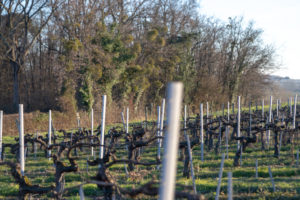
This area of the Anjou-Villages falls on a geological fault-line. Half of the vineyards are grown in slate soils; the other half is grown in Parisian white limestone (known as the Paris-Basin) https://en.wikipedia.org/wiki/Paris_Basin
Thus all of our wines here are a blend of several vineyards with extremely individual terroir.
The Anjou Rouge comes from 25-30 year-old vines. The blend is 80% Cabernet Franc and 20% Cabernet Sauvignon. The wine is made using no additives, and is macerated for 10 days in ambient temperature with ambient yeasts.
The wine is non-filtered and is aged in stainless steel tanks.
HVE Level 3 has 4 components:
1- Extreme reduction in phyto-santitary treatment. Average winery uses 16 treatments per growing season. In HVE the absolute maximum is 6, and only if absolutely needed.
2- Preserve biodiversity in the vineyard. Including herbs between the rows, as well as respect for trees, and beehives.
3 – Limit the use of fertilizer. The goal is for the land to create what it needs on it’s own.
4- Water use is limited and conscientious when used.
Below, Pascal’s sons, Alexi and Charles-Eusebe; slate; and a biodiverse vineyard.
